Macaws are a family of large brightly coloured parrot species found in the rainforests of South America. There are currently fifteen macaw species in the wild, plus two further species that are believed extinct. One of those species—the spix macaw—does have a secure captive population and (as of 2022) is being reintroduced to the wild.
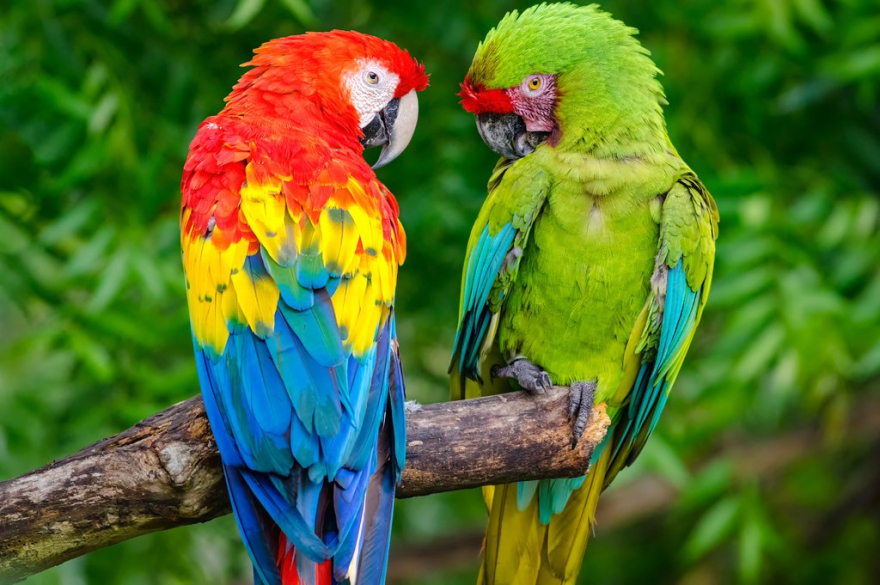
In addition to their large size and bright colours, macaws are known for their extremely long lifespan. A blue & gold macaw named Charlie lived to be a whopping 114 years old, however few macaws exceed 70-80 years of age.
Macaw species in Australia
This list includes only species that an average Australian aviculturlist could source without too much difficulty. Species that are extremely rare and expensive (>$50,000) have not been included. Similarly, species that are exclusively found in zoo collections have been excluded.
Blue & Gold Macaw
The blue and gold macaw is arguably the most iconic species in the family. Known for their playful and affectionate nature, high intelligence, and astonishingly loud scream, these are easily the most sought after macaw.
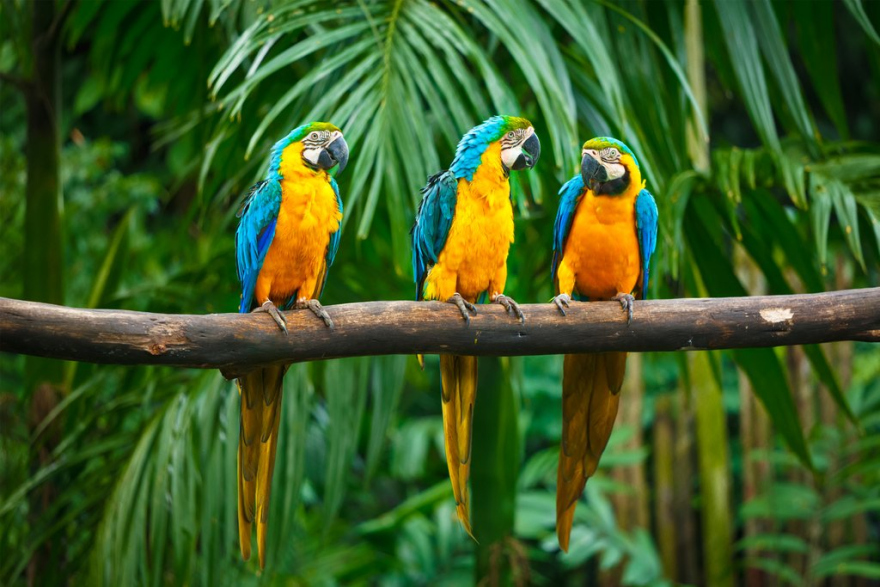
The great news for anyone who wishes to own one of these incredible birds is that their price is dropping quite rapidly: They’ve gone from a 5-figure price to a mid four-figure price in less than a decade, and will probably continue to drop. Birds exhibiting colour mutations are also becoming increasingly available.
Hahn’s Macaw
Also known as the red-shouldered macaw, the Hahn’s macaw measures only 30cm tall, making them the smallest of the macaw species. Their smaller size allows them to be housed in fairly standard-sized parrot aviaries, which has made them one of the most abundant macaw species in Australia.
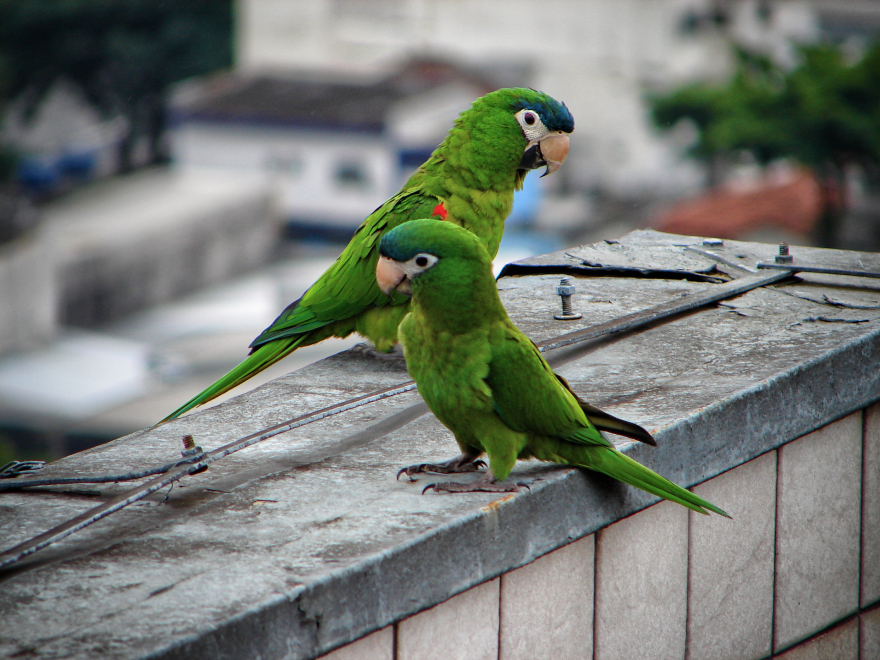
Though more frequently kept in an aviary than their larger relatives, the Hanh’s macaw is still an excellent pet. They are just as long-lived and intelligent as the bigger species, but in a much more managable size.
Scarlet Macaw
The scarlet macaw is another of the iconic macaw species, alongside the blue and gold macaw and hyacinth macaw. Known for their intense red colouring and endearing personalities, Scarlets are popular as pets throughout the world and are well established in Australian aviculture.
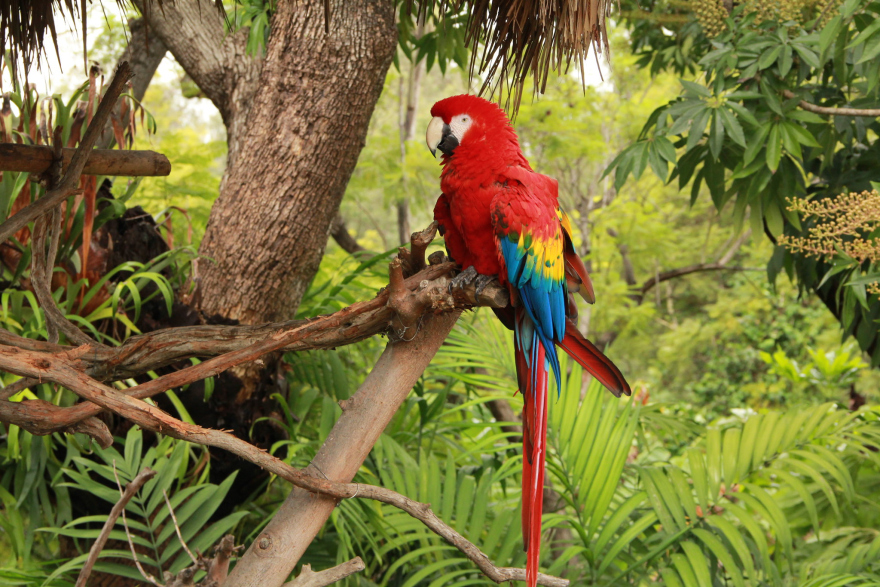
Scarlet macaws are thought to be one of the earliest parrot species to be bred in captivity, following the discovery of breeding facilities dating from the 11th century in Northern Mexico.
Green-Winged Macaw
Also known as the red-and-green macaw, this large species quite closely resembes the scarlet macaw. The key differences between the two species are the green-winged macaw’s larger beak, and eponymous green wing colouring (where scarlet macaws have yellow).
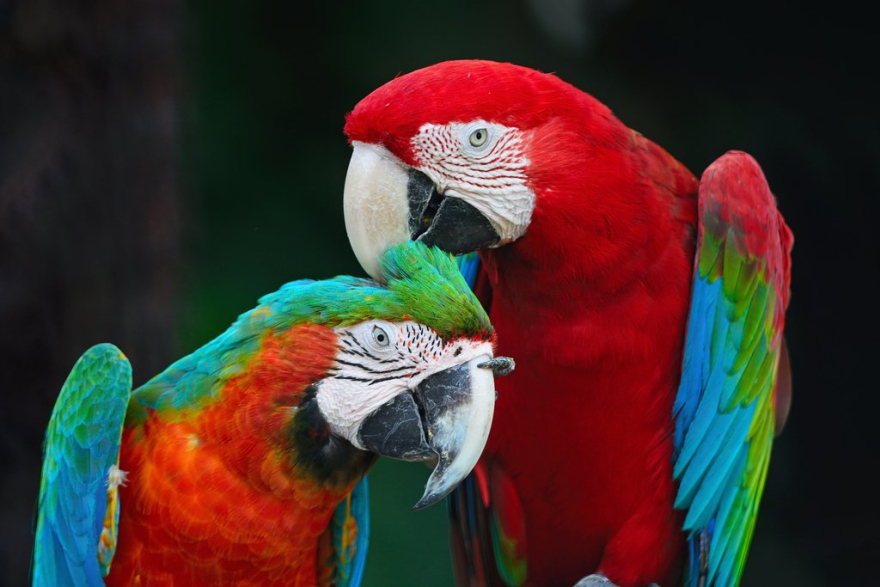
They are one of the less commonly seen species in Australian aviculture. Ironically, harlequin macaws seem to be more readily available than green-winged macaws, despite being a hybrid that requires a green-winged to produce.
Blue-Winged Macaw
More commonly known in aviculture as the Illiger’s Macaw, this species is another of the “mini macaws” that make great pets for those without the space for one of the larger options.
Due to their visual similarity to several of the other mini macaw species, Illiger’s macaws are reasonably affordable (by macaw standards). A young hand-raised bird can be purchased from a dealer or breeder for under $3,000.
Chestnut-fronted macaw
Also known as the “Severe Macaw”, the chestnut-fronted macaw is one of the lesser known species in Australian aviculture. They are considered to be a “mini macaw”, but at 45m tall are probably the largest species in the group. They are also reputed to be one of the more aggressive macaw species, which is the origin of the “severe macaw” nickname.
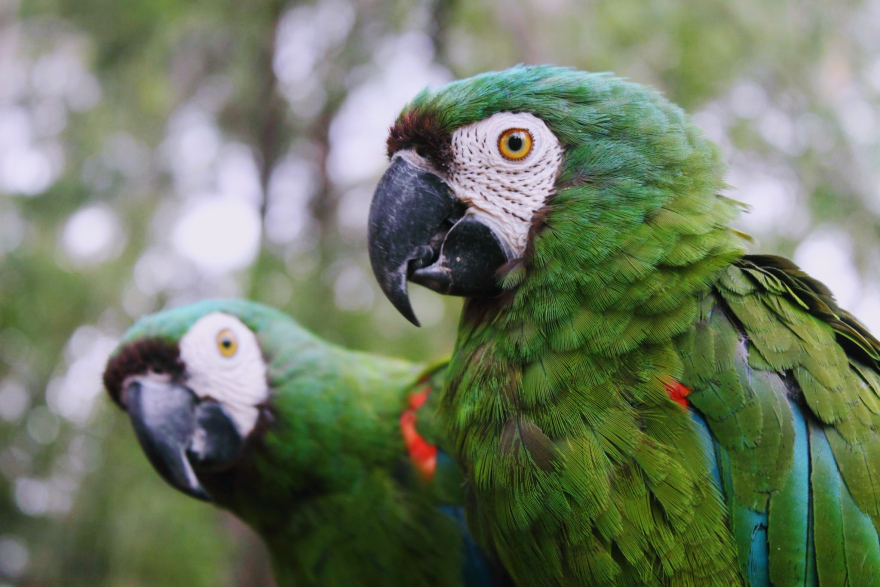
Their exact life expectancy in captivity is not known, with some older sources claiming they only live for around 30 years. It is extremely likely that—noting the lifespans of their close relatives—they can live for more than twice that long.
Yellow-collared Macaw
The final “mini macaw” on this list, the yellow-collared macaw is an excellent all-rounder; suitable as both an aviary bird or a hand-raised pet. They are one of the more active macaw species—both mentally and physically—and can become aggressive if not provided with sufficient attention and entertainment.
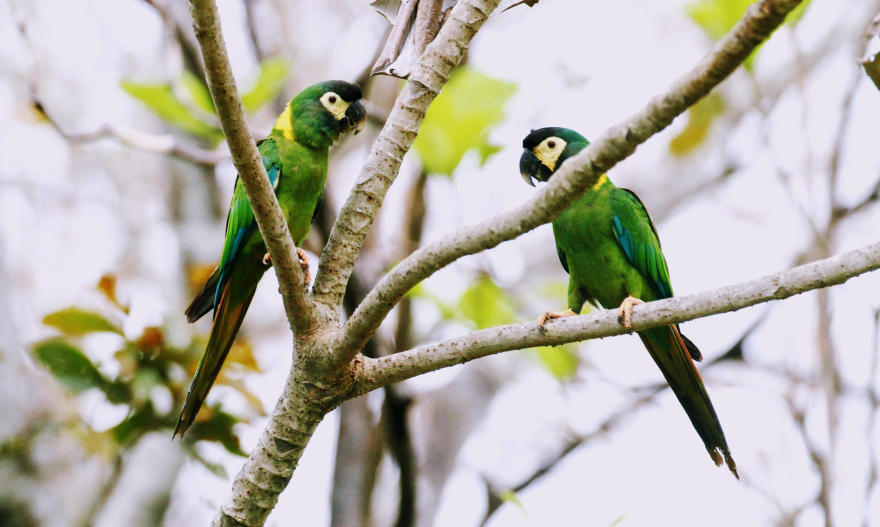
Fortunately, yellow-collared macaws seem to be dropping in price and increasing in availability fairly quickly. In 2023, you can purchase a breeding pair for under $5,000.
Hybrid Macaws
Most of the macaw species can be cross-bred to create interesting hybirds. There are dozens of macaw hybrids that are produced frequently enough that they have been given names. Some of the more popular hybrids include:
Catalina Macaw: A hybrid between the scarlet macaw and blue & gold macaw. Nicknamed the “rainbow macaw”.
Harlequin Macaw: A hybrid between the blue & gold macaw and green-winged macaw.
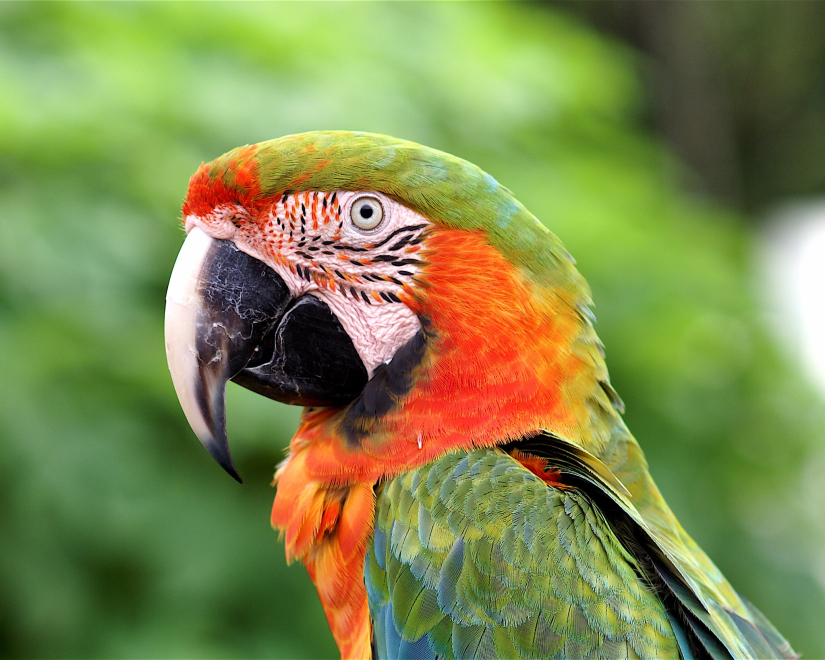
A hybrid between two wild-type macaws is called an F1 hybrid. As most macaw hybrids are fertile, it is possible to produce birds containing genetics from three or more species. When a hybrid is crossed with a pure macaw, the offspring is known as an F2 hybrid. When two different hybrid birds are crossed, it is possible to produce an F3 hybrid.
Other macaw species in Australia
In addition to the “readily available” species listed above, there are a number of additional macaw species represented in Australian private collections but rarely available for sale. These include:
- Military Macaw; a large green, blue and yellow parrot that is gradually becoming more common.
- Hyacinth Macaw; an almost entirely blue parrot that’s easily the largest of the macaw species. These are quietly held by a small number of Australian breeders and can easily fetch $50,000 per bird.
- Great Green Macaw; which is similar in appearance to the Military Macaw, only slightly larger. Also known as the Buffon’s Macaw and held in Australia in very small numbers.
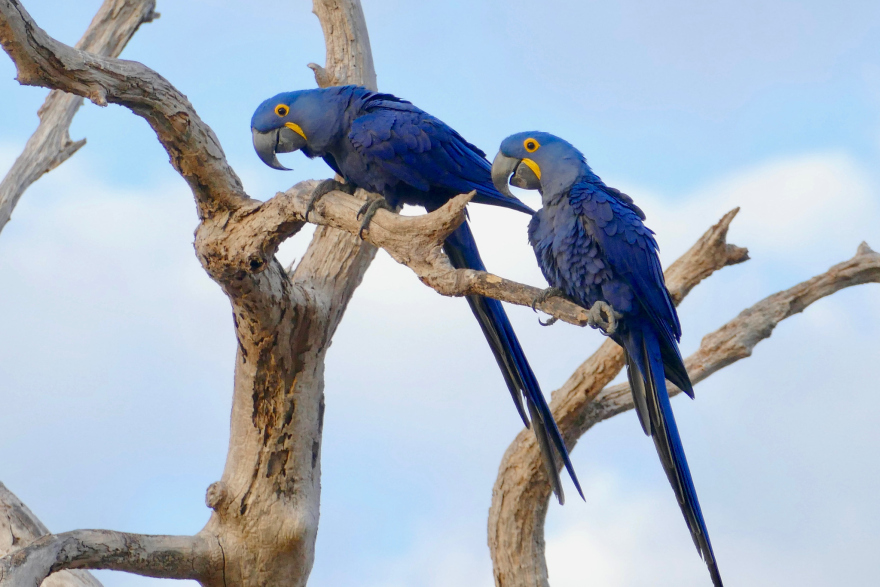
Purchasing a macaw
Due to their high value, potential macaw buyers are heavily targeted by scammers. Always purchase birds from reputable breeders or dealers, and never send anyone money unless they’re prepared to let you meet the macaw first.
There are often a number of macaw breeders advertising in the classifieds section of bird magazines (such as Birdkeeper). This is probably the safest place to find a reputable seller.